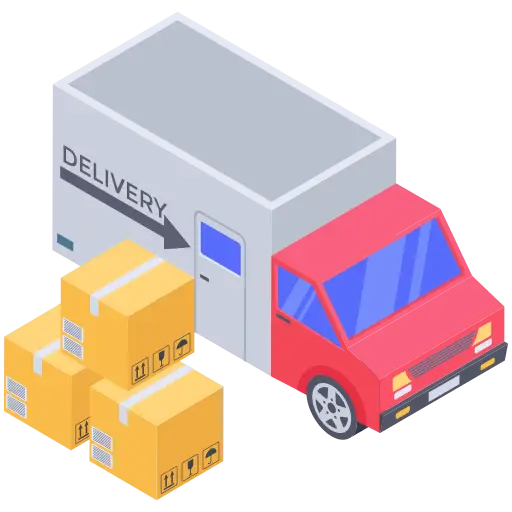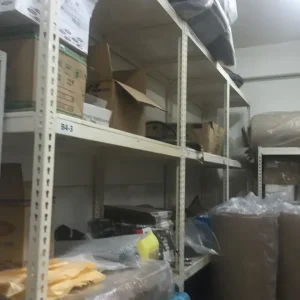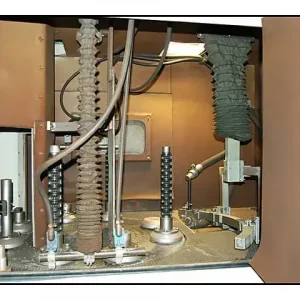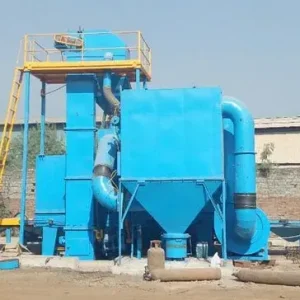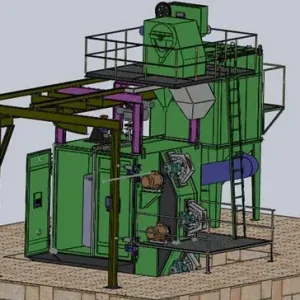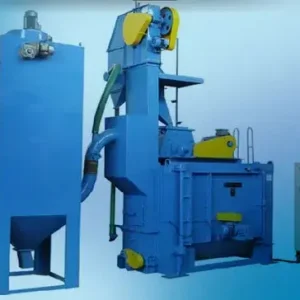Shot blasting machines are essential equipment in various industries, offering an efficient and effective method of surface preparation. Whether you’re in the construction, automotive, or manufacturing industry, understanding the nuances of these machines can significantly enhance your operational efficiency. In this comprehensive guide, we delve into the intricate details of shot blasting machines, exploring their types, functionalities, and applications.
What is a Shot Blasting Machine?
A shot blasting machine is a device that cleans, strengthens, or polishes metal surfaces by propelling abrasive materials (commonly referred to as shots) at high speeds onto the surface. This process removes rust, scale, paint, or any other contaminants, leaving a clean and smooth surface ready for further processing or coating.
How Does Shot Blasting Work?
The shot blasting process involves the propulsion of abrasive materials at high velocity using a blast wheel or air blasting method. The key components include:
- Blast Wheel: In a wheel blasting system, the abrasive material is accelerated by a wheel, which provides the necessary force to propel the material onto the surface.
- Nozzles: In air blasting, the abrasive material is pushed through nozzles by compressed air, allowing for more precise control over the blasting process.
- Abrasive Material: Commonly used abrasives include steel shots, steel grits, and aluminum oxide. The choice of material depends on the desired finish and the type of surface being treated.
Benefits of Shot Blasting
Shot blasting offers numerous advantages, making it a preferred choice for surface preparation:
- Surface Preparation: It provides a clean surface, free from rust, scale, or paint, which is essential for coating, painting, or bonding processes.
- Increased Durability: The process enhances the durability of metal parts by creating a uniform surface, reducing the risk of corrosion and fatigue.
- Cost-Effective: By automating the cleaning process, shot blasting reduces labor costs and increases efficiency.
Types of Shot Blasting Machines
There are several types of shot blasting machines, each designed for specific applications. Understanding the differences between these machines can help you select the right equipment for your needs.
1. Tumblast Machines
Tumblast machines are ideal for cleaning small to medium-sized parts in bulk. The machine features a rotating drum that tumbles the parts while blasting them with abrasive material. This type is commonly used in the automotive industry for cleaning castings and forgings.
2. Hanger Type Machines
Hanger type shot blasting machines are designed for treating larger, more complex components. The parts are hung on hooks and transported through the blasting chamber. These machines are often used in industries like construction and aerospace for cleaning large structures such as beams, girders, and aircraft components.
3. Table Type Machines
Table type machines are suitable for treating flat, heavy, and delicate parts. The parts are placed on a rotating table inside the machine, where they are blasted with abrasive material. These machines are commonly used for cleaning molds, die-cast parts, and precision components.
4. Continuous Through-Feed Machines
Continuous through-feed machines are designed for high-volume production environments. The parts are loaded onto a conveyor belt and pass through the blasting chamber continuously. This type of machine is ideal for cleaning long, flat components like pipes, rods, and sheets.
Applications of Shot Blasting Machines
Shot blasting machines are versatile and find applications in various industries. Some of the key applications include:
Unveiling the Secrets: A Day in the Life of a Shot Blasting Machine
The Role of Sand Blasting Equipment in Modern Industries
Benefits of Using Shot Blasting Machines
1. Surface Preparation
One of the primary applications of shot blasting machines is surface preparation before painting, coating, or bonding. By removing rust, scale, and old paint, shot blasting ensures a clean and roughened surface that provides better adhesion for coatings.
2. Cleaning
Shot blasting is extensively used for cleaning metal surfaces, including removing contaminants like rust, scale, and paint. This application is vital in industries such as shipbuilding, automotive, and construction, where maintaining clean surfaces is critical for quality and longevity.
3. Peening
Shot blasting machines are also used for peening, a process that improves the fatigue strength of metal components. By creating compressive stresses on the surface, peening enhances the durability and life of parts, making it a crucial process in the aerospace and automotive industries.
4. Deburring
Deburring is the process of removing sharp edges or burrs from metal parts. Shot blasting machines effectively smooth out these imperfections, ensuring the parts are safe to handle and meet precise specifications. This application is particularly important in the manufacturing of tools, gears, and other precision components.
Choosing the Right Shot Blasting Machine
Selecting the right shot blasting machine depends on several factors, including the type of material you are working with, the size and complexity of the parts, and the production volume. Here are some key considerations:
- Material: Different materials require different abrasives. Steel shots are commonly used for heavy metal parts, while softer abrasives like glass beads are used for more delicate surfaces.
- Part Size and Shape: The size and shape of the parts being treated will determine the type of shot blasting machine needed. For example, hanger type machines are ideal for large, complex parts, while tumblast machines are better suited for smaller parts.
- Production Volume: High-volume production environments require machines that can handle continuous operation, such as continuous through-feed machines. For lower volumes, table type or tumblast machines may be more appropriate.
Maintaining Shot Blasting Machines
Proper maintenance of shot blasting machines is essential to ensure optimal performance and longevity. Regular inspections and servicing can prevent costly downtime and extend the life of the equipment. Key maintenance practices include:
- Regular Cleaning: Ensure that the machine is cleaned regularly to prevent the buildup of abrasive material, which can lead to blockages and reduced efficiency.
- Inspection of Wear Parts: Components like blast wheels, nozzles, and conveyor belts should be inspected frequently for wear and tear. Replacing these parts before they fail can prevent damage to the machine and ensure consistent performance.
- Lubrication: Proper lubrication of moving parts is crucial to prevent friction and wear. Regularly check and top up lubricants as required.
Conclusion
Shot blasting machines play a vital role in surface preparation, cleaning, peening, and deburring across various industries. Understanding the different types of machines and their applications can help you select the right equipment for your needs, improving efficiency and quality in your operations.

